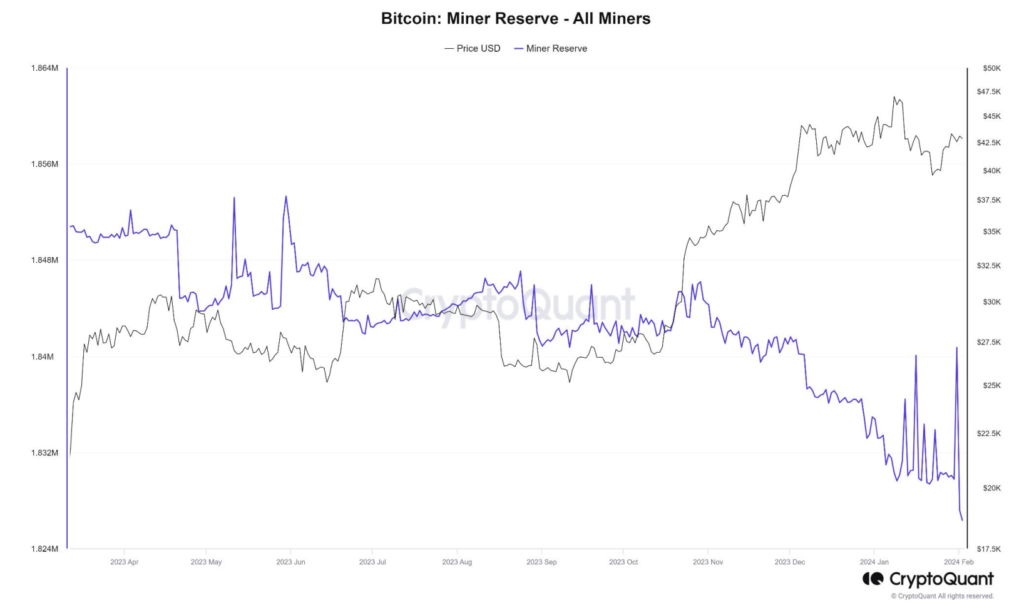Bitcoin ETFs in the US led to a significant movement of Bitcoin from miner wallets to exchanges.
The introduction of Bitcoin exchange-traded funds (ETFs) in the United States has a direct impact on the Bitcoin reserves held by miners. Miners transferred more than one billion bitcoins from their wallets to exchanges within the first 48 hours of trading.
Bitfinex Alpha’s most recent market report, which reflects on-chain data, indicates that the second day of trading for Bitcoin exchange-traded funds (ETFs), on January 12 witnessed a large increase in the number of Bitcoin miners who withdrawn their funds to exchanges.
The report, citing data from Glasnode, states that miners transferred over one billion dollars worth of Bitcoin to exchanges from miner-associated wallets on the same day. This is a six-year high in the amount of Bitcoin coming out of miner wallets.
Furthermore, on February 1st, miners transferred a significant amount of Bitcoin, totaling 13,500, to financial exchanges. Furthermore, the report suggests that on February 2, particular mining businesses may have returned around 10,000 bitcoins to their wallets, indicating a possible rebalancing activity.
Analysts from bitfinex estimate that the outflow of 3,500 bitcoins over the course of a single day is the highest value of the metric observed since May 2023.

Since the legalization of Bitcoin ETFs in the United States, the on-chain data that provides a reflection of the movement of Bitcoin from miner wallets has been primarily negative, according to the research.
According to data provided by CryptoQuant, the estimated net withdrawals from miners amount to roughly 10,200 BTC. Several factors influence the amount of bitcoin removed from miner wallets.

The paper mentions that miners require operational liquidity and respond to market conditions and modifications that occur after the approval of Bitcoin ETFs
“This substantial transfer of BTC from miners to exchanges reflects the miners’ response to market conditions and potentially their need to liquidate holdings for operational expenses or risk management.”
In addition, the researchers note that it is possible that some miners attempted to profit from the price spike in the weeks leading up to the approval of the exchange-traded funds. On-chain data reveals that long-term Bitcoin investors are keeping assets and are reluctant to sell at present market rates.
Miners moved Bitcoin from wallets after the approval of the Bitcoin ETFs. Regarding the supply last active indicator, the experts emphasize that there has been a decrease in supply last active throughout the course of the one-year and two-year time periods.
During this activity, investors sold or switched dormant Bitcoin assets into other Bitcoin ETFs. The Grayscale Bitcoin Trust directly relates to this conduct.
“The result being that a noteworthy volume of BTC, which has been dormant for an extended period, has begun to circulate in recent weeks.”
According to the paper, the movement of older Bitcoin supply is a key indicator of market activity. This movement reflects the shifting views and strategies of investors who are reacting to Bitcoin exchange-traded funds (ETFs) or reevaluating their positions in reaction to the current market conditions.
The analysts believe that a tight grip still controls a significant majority of the Bitcoin supply. There is a continuing belief among long-term investors that Bitcoin will continue to appreciate in value in the future, as evidenced by the trend of holding.












